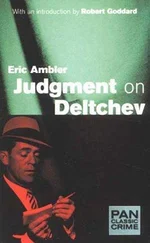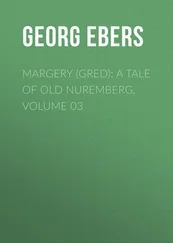1) In which country did the mass extermination of Jews begin? 2) What was the main method of killing in these exterminations? 3) What are Einsatzgruppen ? 4) What is Babi Yar? The answers: 1) Ukraine (or Soviet Union or Russia); 2) Shooting; 3) Nazi killing squads; 4) A killing field in Ukraine where the Nazis murdered 34,000 Jews.
Two hundred twenty students took the quiz. Not one student aced it. Two students answered three questions correctly, five got two right, and seven students scored one—meaning 205 students were not able to answer a single question correctly. Only one student knew that the mass exterminations began in “Russia.” The overwhelming majority said Germany. A dozen students identified Babi Yar as a Jewish holiday.
To put the dismal results in depressing perspective, this school is in a middle-class neighborhood in a university community with high rates of literacy and cultural awareness. The several classes of eighth-graders were brought to our presentation because they already were studying the Holocaust. Media students at the school have produced award-winning films of their visits to Auschwitz. If smart students with motivated teachers can’t pass a quiz about basic Holocaust history, who could?
Not the tanned, well-spoken residents, many of them retirees, of an affluent community outside Orlando who came to my presentation on a balmy, sun-splashed morning. Two women told me their husbands would have been there, but they had tee times. Though equipped with much longer memories and experience, this group did only slightly better than the middle-schoolers in Bloomington, and I thought I noticed two or three furtively researching on their iPhones.
The most startling confirmation for me that Ukraine Holocaust blindness cuts across all ethnic, religious and generational lines came on a rainy Sunday night in March when I traveled to Minneola, forty-five miles south of Orlando in what used to be orange groves, to speak at a new synagogue that had just opened in a small strip shopping center. It was an older congregation, many of them retirees from New York and others points north. After my usual riff on the Einsatzgruppen and how the mass killings had begun in Ukraine, I asked for a show of hands from all those who had heard this before. Not one hand went up.
This information about Ukraine is so widely un known that once you come into possession of it, you feel as if you belong to a secret society and begin to notice its absence everywhere. I could not help noticing that it’s virtually absent from the impressive Holocaust memorial in Miami Beach, an open-air exhibit with a plaza of Jerusalem stone, a meditation garden, a waterlily pond, and a magnificent sculpture—a giant hand and arm, tattooed with a number from Auschwitz, outstretched to the heavens. Nearby in “The Arbor of History” are fifty inscribed black granite slabs telling the history of the Jewish people and the Shoah in words and images.
It reads more like the history of Auschwitz and the Warsaw ghetto, both cited on many panels. Only two slabs contain any reference to Ukraine. (A third panel uses a photo of undressed women at a killing field in Ukraine, but it is not labeled as such.) One tells about the formation of the Einsatzgruppen but does not say where they operated. Panel #42 out of 50 has a photo of corpses in a ravine. “Many of these covered ravines were later discovered in the countryside of Poland and the Ukraine,” the caption says. “In one such ravine in Babi Yar, outside of Kiev, the capital of the Ukraine, over 30,000 Jews were killed in 2 days shortly after the Germans arrived.” (Every source I’ve seen gives a total closer to 34,000.)
The dates of the Babi Yar slaughter, Sept. 29–30, 1941, are not set in stone at the memorial. Nor is June 22, 1941, when the Nazis invaded the Soviet Union with the Einsatzgruppen in tow and ignited the mass exterminations which became the impetus for use of gas chambers and ovens at places like Treblinka, Sobibor, Belzec, and Auschwitz-Birkenau, which had not even been built at the time of the Babi Yar massacre. I am not suggesting that the creators of the Miami memorial intentionally marginalized the Holocaust in Ukraine. That would be antithetical to their greater purpose. My point is illustrative: the memorial was a product of its times—conceived in 1984 when there was little public awareness in the U.S. of wartime events in Ukraine, and opened in 1990 before the implosion of the Soviet Union, which assiduously maintained the fiction that the Holocaust was not a Jewish event. Still, considering the substantial scholarship available at the time—Racel Hilberg wrote at great length about the Einsatzgruppen in The Destruction of the European Jews, published in 1961—the scant mention of Ukraine at the Miami memorial is startling.
All the history on the panels at the Miami Beach memorial was written by Helen Fagin, a Polish survivor and scholar who served as chair of the committee in charge of developing educational material for the United States Holocaust Memorial Museum. In early 2011, I reached Fagin at her home in Sarasota, Fl., where she now lectures at the New College of Florida. After describing my project, I told Fagin I was puzzled by the fact that there was so little information on the memorial about events in Ukraine.
Fagin made no comment on the events themselves, these first mass exterminations of the Shoah, focusing instead on geography and national boundaries—Ukraine’s history as a geopolitical football fought over by Poland, Romania, Czechoslovakia, and the Soviet Union, which she noted had “absorbed” it. As a mere republic of the Soviet Union, Fagin suggested, it did not merit or require special attention on the memorial. Well then, I said, how about the Nazi invasion of the Soviet Union? Was not June 22, 1941 as consequential a date as others on the memorial such as May 8, 1943, when the leader of the Warsaw ghetto, Mordechai Anielewicz, was killed? Or January 22, 1942, when Hitler’s high command met at Wannsee to approve plans for the Final Solution, which had already consumed half a million Ukrainian Jews?
Getting no direct answer to that, either, I asked Fagin if she knew about the trial of three Nazi officers for war crimes in Kharkov in December 1943—the first such trial, long before the post-war trials at Nuremberg—and she confessed that she did not. She then proceeded to explain why the trial she had never heard of was of no special import. “These soldiers were not on trial for what they did to the Jews or Ukrainian people—they were put on trial because they were political enemies of the Soviet Union,” Fagin said.
This is a classic difference without a distinction. Yes, the Einsatzgruppen and the German army were “political enemies” of the Jews and other Ukrainians they murdered. But as Clausewitz said, war is the extension of politics by other means, and never was this more evident than it was in the planning for the invasion of the Soviet Union.
“By Hitler’s definition, the war with the Soviet Union was different from the wars he had waged against Poland, France and the other countries in Europe,” writes historian Yitzhak Arad in The Holocaust in the Soviet Union . “General Alfred Jodl was ordered by Hitler to prepare an appendix to the ‘Special Orders to Directive No. 21’ (Operation Barbarossa), saying, ‘The forthcoming campaign is more than a mere armed conflict: it is a collision between two different ideologies.’” [1] Yitzhak Arad, The Holocaust in the Soviet Union (University of Nebraska Press, Lincoln; Yad Vashem, Jerusalem, 2009), 51–52.
The document gave SS chief Himmler authority to eliminate all elements of the Soviet “political system,” including many Jews.
Читать дальше












